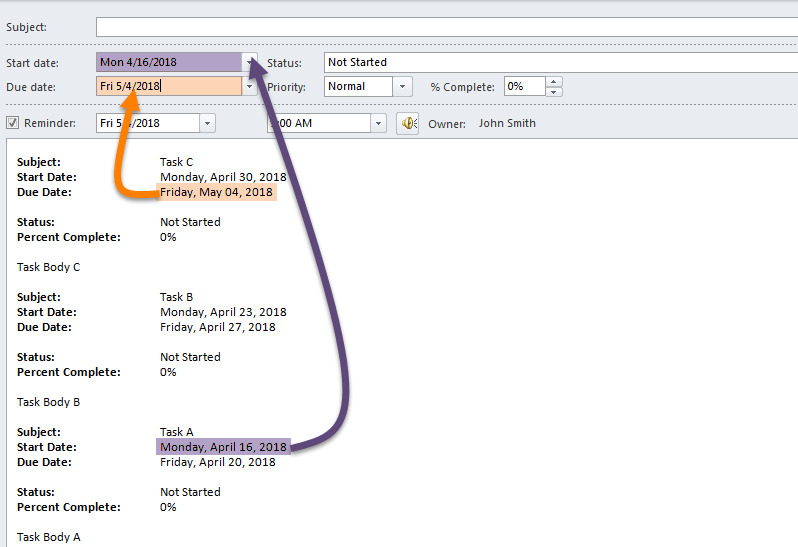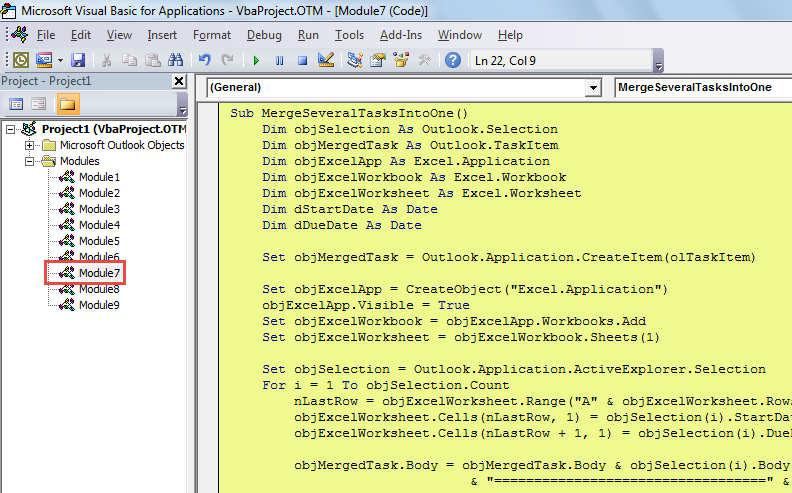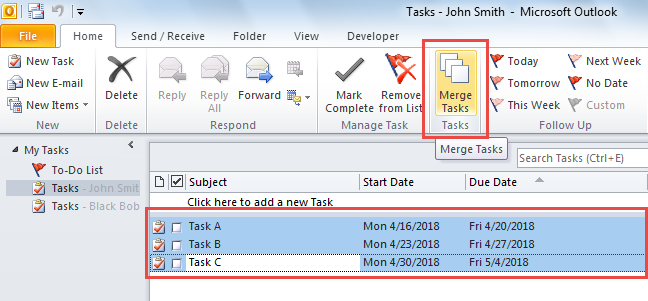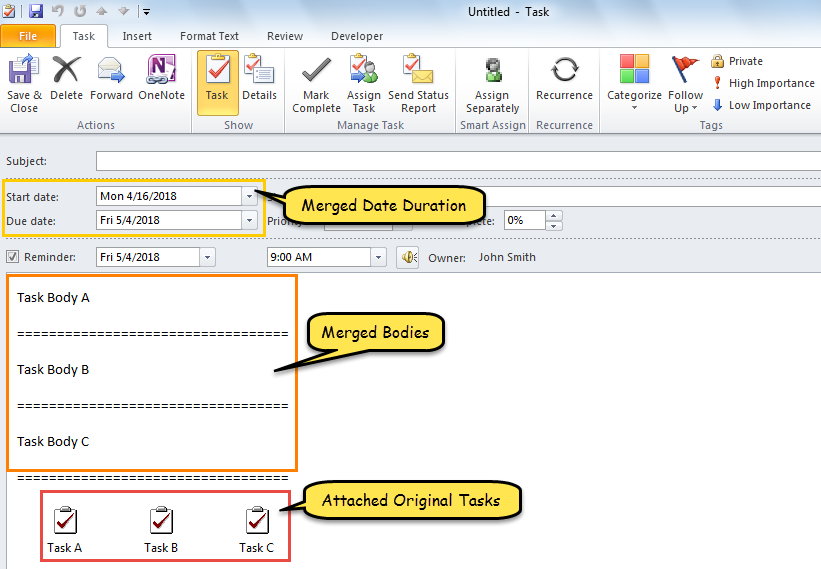Sometimes, you may need to merge multiple tasks into a single task. In the new task, the body contains all the bodies of all the source tasks and start date is the earliest date among all dates of the tasks and so on. Now, this article will teach you 2 ways.
When dealing with multiple Outlook tasks which are correlative to each other, you may want to directly merge them into one task. And the new merged task should include all the source tasks’ bodies and uses the earliest date among all dates as start date and latest date as due date and so on. Now, in the followings, we will introduce 2 means to quickly get it.
Method 1: Merge Multiple Tasks Manually
- In the first place, create a new task.
- Then, in the new task, turn to “Insert” tab and click “Outlook Items” button.
- Next, in the popup window, select the tasks you want to merge.
- And then select “Text only” option in “Insert as” box.
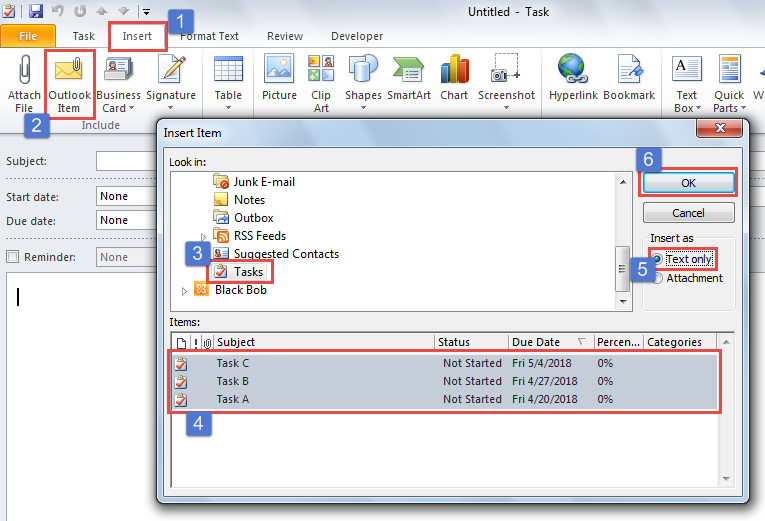
- After that, click “OK” button.
- Later, the information of the tasks will be inserted into the new task’s body.
- Now, you need to manually find the earliest and latest date among all dates in the body.
- Next, change the start and due date of the current task.
- Finally, save this task as usual.
Method 1 will be quite troublesome when setting the start date and due date of the merged task in that you have to manually find the earliest and latest date. In Method 2, you can thoroughly get rid of this trouble.
Method 2: Merge Multiple Tasks via VBA
- For a start, launch Outlook VBA editor according to “How to Run VBA Code in Your Outlook“.
- Then, add reference to “MS Excel Object Library” by reading “How to Add an Object Library Reference in VBA“.
- Later, copy the following code into a module.
Sub MergeMultipleTasksIntoOne()
Dim objSelection As Outlook.Selection
Dim objMergedTask As Outlook.TaskItem
Dim objExcelApp As Excel.Application
Dim objExcelWorkbook As Excel.Workbook
Dim objExcelWorksheet As Excel.Worksheet
Dim dStartDate As Date
Dim dDueDate As Date
Set objMergedTask = Outlook.Application.CreateItem(olTaskItem)
Set objExcelApp = CreateObject("Excel.Application")
objExcelApp.Visible = True
Set objExcelWorkbook = objExcelApp.Workbooks.Add
Set objExcelWorksheet = objExcelWorkbook.Sheets(1)
Set objSelection = Outlook.Application.ActiveExplorer.Selection
For i = 1 To objSelection.Count
nLastRow = objExcelWorksheet.Range("A" & objExcelWorksheet.Rows.Count).End(xlUp).Row
objExcelWorksheet.Cells(nLastRow, 1) = objSelection(i).StartDate
objExcelWorksheet.Cells(nLastRow + 1, 1) = objSelection(i).DueDate
objMergedTask.Body = objMergedTask.Body & objSelection(i).Body & vbCrLf & vbCrLf & "==================================" & vbCrLf & vbCrLf
objMergedTask.Attachments.Add objSelection(i)
Next
'Get the Min and Max Date via Excel Function
dStartDate = objExcelApp.WorksheetFunction.Min(Columns("A"))
dDueDate = objExcelApp.WorksheetFunction.Max(Columns("A"))
objMergedTask.StartDate = CDate(dStartDate)
objMergedTask.DueDate = CDate(dDueDate)
objMergedTask.Display
objExcelWorkbook.Close False
objExcelApp.Quit
End Sub
- Next, add this macro to Quick Access Toolbar or ribbon.
- Finally, you can have a try.
- First off, select the tasks to be merged.
- Then, click the macro button.
- At once, a new task will display, which have all the original tasks’ bodies in body and uses the earliest date as start date, latest date as due date, as shown in the following screenshot.
Insist on Making Regular PST Backups
If you don’t want to lose your valuable Outlook data, it is recommended to make regular backups for your Outlook PST files. Only in this way, when suffering from PST corruption, you can get rid of difficult PST repair, which can be accomplished only via a robust tool, such as DataNumen Outlook Repair.
Author Introduction:
Shirley Zhang is a data recovery expert in DataNumen, Inc., which is the world leader in data recovery technologies, including repair sql and outlook repair software products. For more information visit www.datanumen.com
